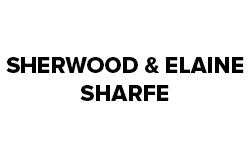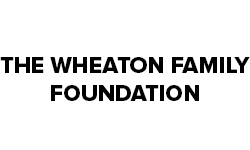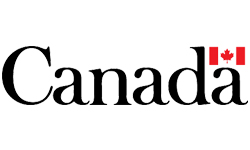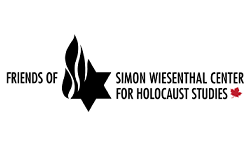Part B: Learning Plan
In this inquiry students will:
- Understand what a promise is.
- Learn that making a promise involves a commitment to future action.
- Consider the thought and planning behind their behaviour and actions.
CITIZENSHIP INQUIRY
What causes me/makes me to behave the way I do?
Curricular Outcomes
Students will:
- Explore examples of promises made through actions and words, and why it is important to keep promises. DRK.2
- Demonstrate an understanding of the spatial relationships among people, places, and environments. DRK.1
- Consider how place and physical systems influence daily life. DRK.3
Questions are posted and discussed with students at the start of the exploration of study. These open-ended questions are continually revisited; encompass concepts that students will explore throughout the unit of study; form the evidence of understanding; and, frame the assessment at the end of the unit of study. Guiding questions are posed to support student thinking as they explore the answers to the larger overarching questions.
QUESTIONS TO GUIDE INQUIRY
Essential Questions: Guiding Questions
- How are present events related to past events?
- How does my history and culture influence my thinking?
- How does the past influence your present? Your future?
- What story is my behaviour telling? (How do we check to see if our behaviours honour our commitments? Is my behaviour showing what I believe?)
- Is my behaviour planned or am I reacting?
- How would someone else describe what I am doing?
- What does my behaviour look like to someone else?
Vocabulary
- commitment
- promise
- agreement
CONNECT TO TOPIC AND SURFACE STUDENTS’ THINKING ABOUT …
This section introduces the concepts and helps teachers gain an understanding of the current thinking of the class. Present essential questions and allow students to think about and talk about. Student answers will give teachers a baseline or beginning understanding of the amount of specific and incidental teaching required to explore these outcomes. Vocabulary is introduced and noted here. This section frames the “We do” portion of the lesson where teachers guide the initial structure of the inquiry.
Present essential questions to students at the start of the exploration of study. As students make meaning of the outcomes, the answers to these questions will frame their thinking at the end of the unit of study.
- Read “A Promise is a Promise” by Robert Munsch and Michael Kusugak.
- Importance of keeping a promise regardless of how difficult it is for the person making the promise.
- Apply the essential questions to the characters in the story. e., What story did their behaviours tell about them?
- How would you describe their behaviours?
- Find other stories that have promise and commitment theme.
- “Horton Hatches the Egg” by Dr. Seuss
Lesson: It’s important to keep your promises. Faithfulness has its own rewards.
- Determine what the students know, understand, need to be able to do to master/answer the essential questions.
- Check vocabulary understanding – promise, commitment.
- Create (K)now- (W)ant to know – (L)earned chart for students.
- What do students know about promises, commitment?
- Connect learning outcomes to previous learning/ future learning.
- Students will use new learning to understand that:
- their actions affect others
- actions now will affect how they do things in the future
- promises made are commitments to act in a particular manner
- Students will use new learning to understand that:
DEVELOPING UNDERSTANDING
This section is the core of the lesson. It describes the main activity(ies) involved. In inquiry-based learning, the teacher facilitates the activities that lead to the understandings that student make of the essential questions. It is critical then, that students be allowed to raise questions and talk about issues that develop as they explore the learning activities.
Behaviours are a commitment to action.
- Planning behaviour and examining behaviour for consequences.
- Talk with students about going for an outing away from the school.
- e. picnic, fishing, hike, swimming, hockey
- What do students need to take to get ready to go, so that they are successful while they are there? What do they need to consider regarding the weather so they will be successful? Teach students this is planning and thinking ahead.
- What might happen if they did not do that planning?
- Develop understanding that safety could be an issue, may not be able to continue event/plans.
- Planning a community feast, classroom celebration, birthday party.
- Identify what they need to think about.
- Think about guests they might invite – What might happen if people said they would come, made a commitment or promise and then did not follow through on that.
- Develop understanding that feelings could be hurt, people might develop misunderstandings about why person did not come to event.
- Remind students of treaty education study where students learned about promises made to First Nations people.
APPLY AND EXTEND KNOWLEDGE
This section includes ideas to extend the inquiry and apply concepts explored. This section may also include additional reflective questions to promote student connection to the topic. Reflective questions encourage critical and creative thinking.
Extend outside of classroom
- Moving to different parts of the school i.e. library, gym, art room.
- When moving to another place in the school or community, describe/remind/ask students what appropriate behaviours look like. Be sure to use proper labels to define the various areas of the school.
- When they get to location or finish event ask students to reflect on their behaviour while traveling to space, during event – Did they behave the way they had planned? Could they have done better? Would they do the same thing in the future?
- Consider behaviours in places outside of school i.e. spiritual places, hospitals. What kinds of behaviour are needed there? (Be sure to acknowledge the different names that students have for spiritual leaders.)
- Identify heroes or someone that students admire.
- List attributes of individual – hockey player, soccer player, dancer, drummer, hunter.
- Determine what the person did to become so well known – practice, train, work with an elder.
- Link behaviours to actions and a commitment to becoming better; reinforcing that behaviours are a commitment to action.
- Revisit recycling examples studied in protecting environment and reducing waste.
- Role play problem situation and have students suggest different endings for behaviour describing possible consequences.
- Describe promises made in treaties, and explain why it is important to keep them.
- Describe feelings of calmness/peacefulness and experiment with the language to convey these feelings.
- Observe and discuss interactions among others to identify positive/helpful and negative/hurtful behaviours.
- Recognize the value of taking time to “stop and think” before choosing/acting.
EVIDENCE OF LEARNING
This section suggests ways in which students may demonstrate their understanding. Ideal demonstrations will be in authentic performance tasks. Assessment pieces vary, but should allow students to demonstrate their understanding in a variety of ways.
Inquiry: What causes me to/ makes me behave the way I do?
Re-visit student answers to the essential questions.
- How has their thinking changed?
- Why is it important to learn this information?
- What will they do with this new learning?
Demonstrating Understanding of Behavioural Consequences
- Have students role play their solutions to proposed scenarios specifically identifying consequences of actions i.e.
- Littering, picking flowers, using too much paper.
- Finding garbage on the playground or in the classroom.
- Someone who is crying.
- Listening to someone not wanting to play with a classmate.
- Recognize/categorize appropriate behaviours and explain thinking or tell why appropriate.
- Demonstrate appropriate behaviours for a variety of situations noting planning and safety consideration i.e. baking cookies/bannock.
- Explain how present behaviours can affect future situations i.e. how would you become a strong soccer player, better fisherman?
STUDENT CITIZENSHIP JOURNAL OPPORTUNITIES
Students are keeping a Citizenship Journal to reflect upon their developing views of citizenship. This section provides prompts for student journals. Students are invited to choose one that interests them.
- What is something you would like to do, a goal you have for the future? Think about and write or draw what behaviours you would have to do to reach your goal.
- Tell why this is important to you.
Learning Plan
In this inquiry students will:
- Learn how people are the same
- Learn how people are different
- Understand what makes a person unique
- Understand how point of view is affected by one’s past experiences
CITIZENSHIP INQUIRY
Curricular Outcomes
Demonstrate an understanding of similarities and differences among individuals in the classroom. INK.1
Students will learn about what makes people different and the same and how we are all unique.
Describe the diversity of groups represented in the classroom. INK.2
Students will know that their classmates may come from many different places and have different traditions
QUESTIONS TO GUIDE INQUIRY
Essential Questions: Guiding Questions
- Why do you think and act the way you do?
- How does our history or past experience affect the way we think? Act?
- What would happen if we all thought and acted the same way?
- What makes us unique?
- What happens when cultures interact?
- What experiences can we share with others?
- How can we let others know about our history?
Vocabulary
- culture
- point of view
- tradition
- diversity
- history
- similarities
- unique
CONNECT TO TOPIC AND SURFACE STUDENTS’ THINKING ABOUT …
This section introduces the concepts and helps teachers gain an understanding of the current thinking of the class. Present essential questions and allow students to think about and talk about. Student answers will give teachers a baseline or beginning understanding of the amount of specific and incidental teaching required to explore these outcomes. Vocabulary is introduced and noted here. This section frames the “We do” portion of the lesson where teachers guide the initial structure of the inquiry.
Present essential questions to students at the start of the exploration of study. As students make meaning of the outcomes, the answers to these questions will frame their thinking at the end of the unit of study.
- Determine what the students know, understand, need to be able to do to master/answer the essential questions.
- Check vocabulary understanding – cultures, traditions, point of view.
- What do students know about cultures?
- Create K-W-L chart for classroom.
- Poll students to determine:
- Favorite colours, foods, seasons of year, etc. Surface vocabulary that might be different.
- Chart results.
- Talk with students about possible reasons for differences – connect to point of view and that differences exist.
- Determine what the students know, understand, need to be able to do to master/answer the essential questions.
- Connect learning outcomes to previous learning/ future learning.
- Students will use their learning to understand that:
- diversity can have a variety of impacts
- background and culture can impact points of view
- advocate for oneself
- appreciate other points of view
- Students will use their learning to understand that:
DEVELOPING UNDERSTANDING
This section is the core of the lesson. It describes the main activity(ies) involved. In inquiry-based learning, the teacher facilitates the activities that lead to the understandings that student make of the essential questions. It is critical then, that students be allowed to raise questions and talk about issues that develop as they explore the learning activities.
- Surfacing differences and similarities in classroom
- Book Suggestion – Whoever You Are by Mem Fox
- Whoever You Are reminds us that children may have different looks, live in different countries, and eat different foods, but they all smile, laugh, and cry.
- Students learn the world is made up of many different people and children everywhere are more alike than different.
- Identify similarities between people physically and emotionally then move to looking at special celebrations and traditions
- Find out how students celebrate common holidays surfacing traditions, special festivals, celebrations – highlight differences, similarities
- e. foods eaten, songs sung, prayers, leaders at celebrations
- Each category highlights a similarity, specific practices highlight differences
- The manner in which similar holidays are celebrated/recognized indicates different points of view
- Find out how many different languages are spoken in homes
- Surface names for caregivers, grandparents, common items, names for items in nature, spiritual leaders, i.e. Mother Earth, Creator, Heaven, Dagda, Tangaroa
- Find out how many different family structures are in classroom- who is living in student’s home. These are individuals who are important in student’s life. Find out what other individuals are important in student’s life.
- Have students interview their family and develop a family tree, family crest, find out how they got their name or what their name means.
- Identify similarities and differences in the celebrations. Develop a summary statement that talks about the similarities and differences in the celebrations.
- Teach students that different cultures have different traditions and different beliefs about similar things i.e. The importance of family names for First Nations people.
- Connect specific differences to specific cultures and have students recognize that language and culture help to shape the person’s identity
- Differences = diversity and create a rich culture that is valued and respected by citizens and Canada
- Identify individuals and groups that are important in children’s lives, and explain why these individuals and groups are important to them as individuals (e.g., family, Elders, senior citizens, friends, storytellers, classmates, members of activity groups to which children belong).
- Investigate the diversity of languages and cultural traditions represented in the classroom and school, and recognize the role language and culture play in an individual’s unique identity.
APPLY AND EXTEND KNOWLEDGE
This section includes ideas to extend the inquiry and apply concepts explored. This section may also include additional reflective questions to promote student connection to the topic. Reflective questions encourage critical and creative thinking.
- Have a cultural fair showcasing food, dancing, music, etc. of a variety of cultures.
- Invite members of the community in to share cultural experiences.
- Have students experience variety of occurrences connected with various cultures.
- Describe their experiences focusing on similarities and differences – likes and dislikes.
- Larger centres can develop lists of different cultural restaurants or eating places and provide opportunities for students to taste food from different cultures that may not be represented in classroom.
- Have students talk/draw feelings associated with new experiences.
EVIDENCE OF LEARNING
This section suggests ways in which students may demonstrate their understanding. Ideal demonstrations will be in authentic performance tasks. Assessment pieces vary, but should allow students to demonstrate their understanding in a variety of ways.
Revisit students’ original thinking on the essential questions.
- How has student thinking changed?
- Why is it important to learn this information?
- What will students do with this new learning?
Demonstration of Understanding
- Teachers can choose one question for the entire class to explore i.e., Why do you think and act the way you do?
- Give examples of different traditions that student has learned about describing a similar celebration or holiday that is recognized in different ways i.e. birth of a baby, marriage
- What happens when cultures interact?
- Have students share in student appropriate manner i.e. talk/draw/act, new experience from another culture
- What would happen if we all thought and acted the same way?
- Describe various cultural traditions, festivals, and celebrations recognized by children’s families and communities, and discuss the importance of these cultural traditions, festivals, and celebrations.
- Identify individuals and groups that are important in children’s lives, and explain why these individuals and groups are important to them as individuals (e.g., family, Elders, senior citizens, friends, storytellers, classmates, members of activity groups to which children belong).
STUDENT CITIZENSHIP JOURNAL OPPORTUNITIES
Students are keeping a Citizenship Journal to reflect upon their developing views of citizenship. This section provides prompts for student journals. Students are invited to choose one that interests them. Students may also respond to any essential question.
- Draw a picture of a favorite family tradition. Why is it important to you? What story does it tell about you
© 2024 Concentus Citizenship Education Foundation Inc. All Rights Reserved.










